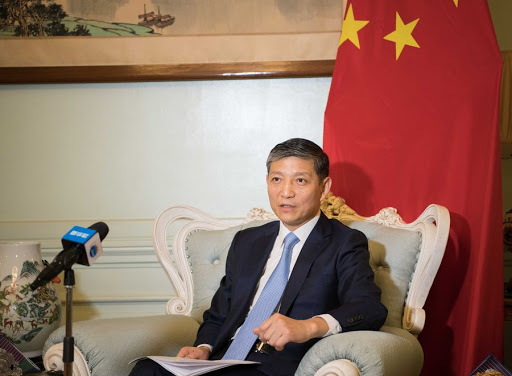Families and taxis: these are the respective subjects of two photographic collections on display at a joint exhibition at the Contemporary Image Collective (CIC) gallery in Mounira.
Cartography brings together the works of Ahmed Kamel and Tarek Hefny, two young artists who, in their different ways, attempt to capture a particular aspect of contemporary Egyptian life through photography.
The subject of Kamel s “Images from the Parlour is Egyptian family life. His portraits of middle class Egyptian families from across Cairo are a glimpse into the private lives of the families photographed.
The subjects are obviously posing, but the differing demeanors, ranging from stiff postures and serious expressions, to nine people squeezed onto a small couch trying to contain their laughter, lend the collection a human feel.
It is more photo-documentary than family portrait.
Taken in living rooms, the varying furniture and interior design styles say much about the identity of each family.
It is interesting, for example, to contrast the French gilt classic living room of the army general and his family with the simpler, modern layout of the young father in jeans and trainers, pictured with his wife and baby.
Photos, paintings, works of art all offer clues as to who these people are, and the detective work is half the fun.
Yet that is as far as the collection goes. As a whole, you feel, it begs for more detail about the lives of the people on display or even, at least, more than just the eight prints of which it is composed. It feels like this is part of a greater project not yet realized and in that way, it is limited.
Apart form a couple of real gems, Tarek Hefny s Cities in 2 colors also wrestles with its own limitations. His prints capture the Peugot 504 taxi, the model favored by Egyptian drivers, in different governorates all over the country.
For sure it is nice to see the taxis appear in different shapes and colors in different settings, from Ismailia to Alexandria to Sharm El-Sheikh. But, save two, the photos certainly do not make the most of the diversity of Egypt s many cities.
The first is the Giza shot, which shows the typical Cairo taxi and its driver before the pyramids, the nearest of the two towering out of the photo s middle ground. A single piece of litter lies on the road in the foreground, signifying perhaps the encroachment of the city on these monumental wonders.
It is a great assertion of the city s identity and one of its centerpieces, the Cairo taxi.
The Across Governorates print, mainly taken in South Sinai, is the other gem. It represents Egypt s magnitude. The setting could be anywhere outside the major cities and pits the simple, white taxi against the endless Egyptian desert landscape.
It is the piece that underpins the collection; a reminder that we are but dots on this vast land. The significance of the taxi – of transport – is that by traversing Egypt s cities and deserts, it allows us to be more than that.
But like Kamel’s family shots, there is a feeling that this collection too is smaller than it could be.
Aesthetically pleasing, though substantially lacking, the works of Kamel and Hefny do make for enjoyable viewing.
If only there was more to view.





